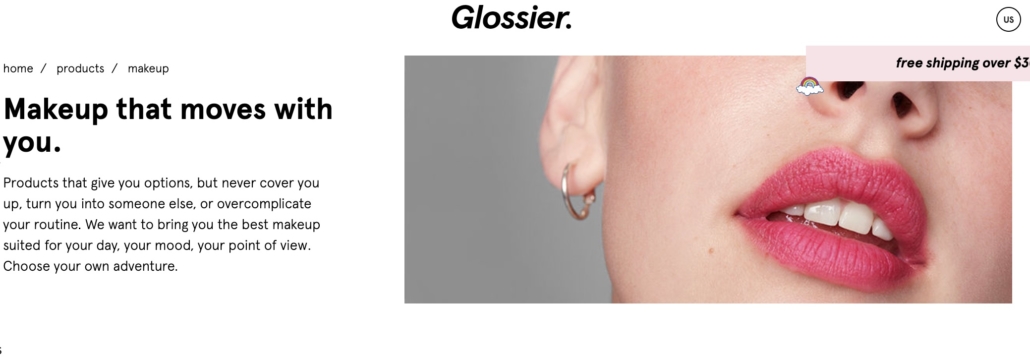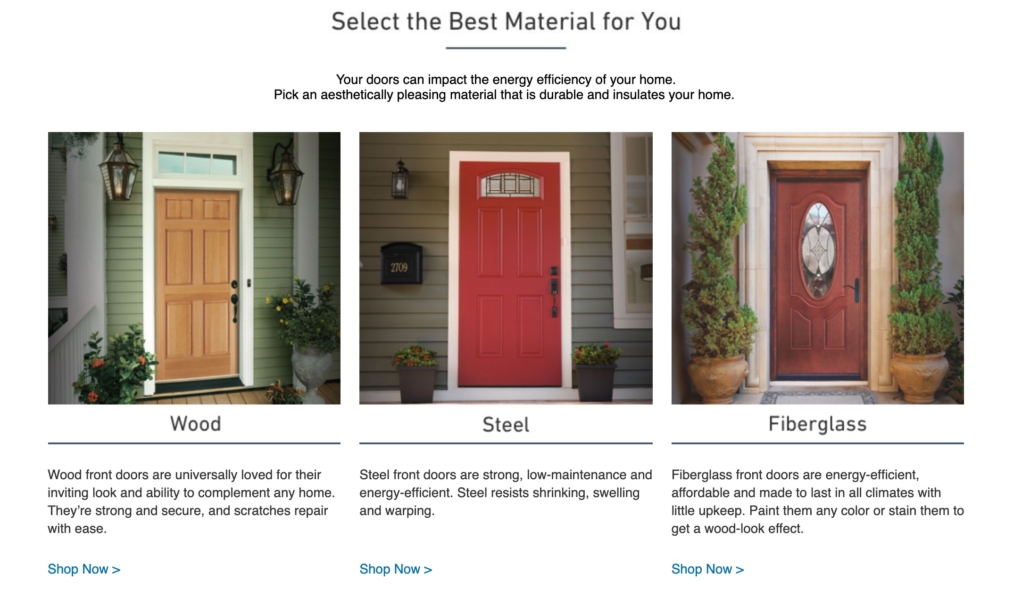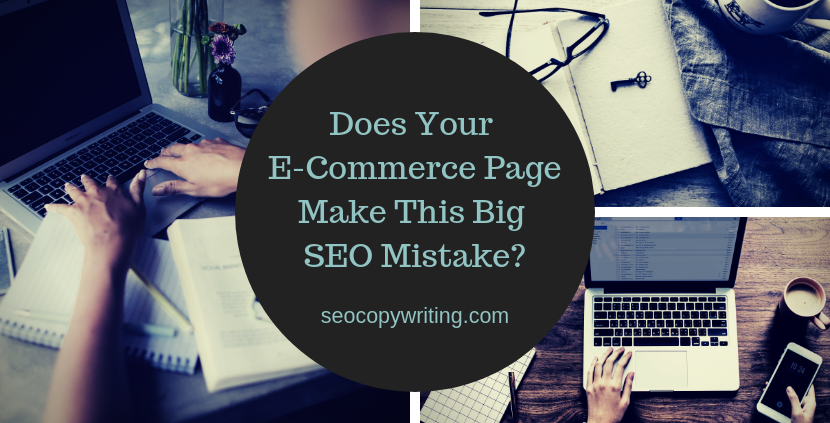Does Your E-Commerce Page Make This Big SEO Mistake?
One of my father’s favorite things to say was, “Just because everyone else is doing it, doesn’t mean you have to do it too.”
As you may imagine, his wise words had zero impact when I was a teenager. I probably rolled my eyes and replied with something snarky. After all, doing what the cool kids did was all that mattered.
As an adult, I see this aphorism in action all the time — especially in SEO.
Case in point: E-commerce category pages.
This situation recently came up with a wonderful long-term client. He asked me to write “SEO copy” for a product subcategory page to replace what was there.
When I clicked through to the category page, I saw a common issue…
…all the text was shoved way below the fold. There was a headline, lots of product thumbnails, and around 300 (fortunately, well-written) words at the bottom.
Oops. No wonder he called it “SEO copy.” Chances are, nobody saw (or paid attention to) the copy. It was solely there for Google to have some keyphrase-rich copy to work with.
So, I sent him this article, that explains Google’s stance on this SEO writing technique. Google’s John Mueller even says, “from our point of view, it’s essentially keyword stuffing.”
It doesn’t get more clear than that.
Yet, my client had a (very good) question. “If it’s so bad, why do I see other sites do this all the time?”
Yup. He’s right.
I totally understand his confusion. After all, a quick e-commerce site check shows a number of sites doing the exact same thing. Home Depot does it. Brookstone does it. Land’s End has almost 1,200 words of tiny type crammed on the bottom of their women’s clothing category page.
Sad.
The thing is, these sites are missing huge opportunities. Instead of thinking “SEO text,” they should be thinking of ways they can make the page better — and yes, showcase their benefits.
The cool kids aren’t always right.
You don’t need to write a below-the-fold novel on your category pages. You just need to rethink how to give your readers (not just Google) the information they need.
For instance…
Glossier has a short, benefit-full copy block at the top of their category pages.

Tektronix’s spectrum analyzer category page has a snazzy, benefit-rich slider plus two short (and keyphrase-rich) copy blocks.

The Lowe’s exterior doors category page is clean, clear and concise. It’s easy to find what you need, and the benefits are clear.

See the difference? Yes, there’s text — but, it’s not “SEO text” (although the text is optimized.) It’s good for Google and for readers.
It’s a double win.
This is the technique that Google’s John Mueller recommends, too. From the Search Engine Roundtable transcript:
“Maybe shifting that giant block of text into maybe one or two sentences that you place above the fold below the heading is a good approach here because it also gives users a little bit more information about what they should expect on this page. So that’s that’s kind of the direction I would head there.”
That’s way different than a 1,200-word text block shoved at the bottom of the page, eh?
After all, just because the big-site SEO departments are doing it, doesn’t mean you have to do it, too.
Especially when it won’t help your site. ;)
What do you think?
Has a client (or your boss) ever asked you to write “SEO text” for your e-commerce pages? Have you wondered why all the text was being shoved down to the bottom of the page? Let me know in the comments!




This is really useful, and I’ve been going on about Glossier’s website for yonks! Thanks for this … I will be sharing! :)
You’re welcome! I love Glossier’s site, too… I’ve spent lots of money on their products. :)